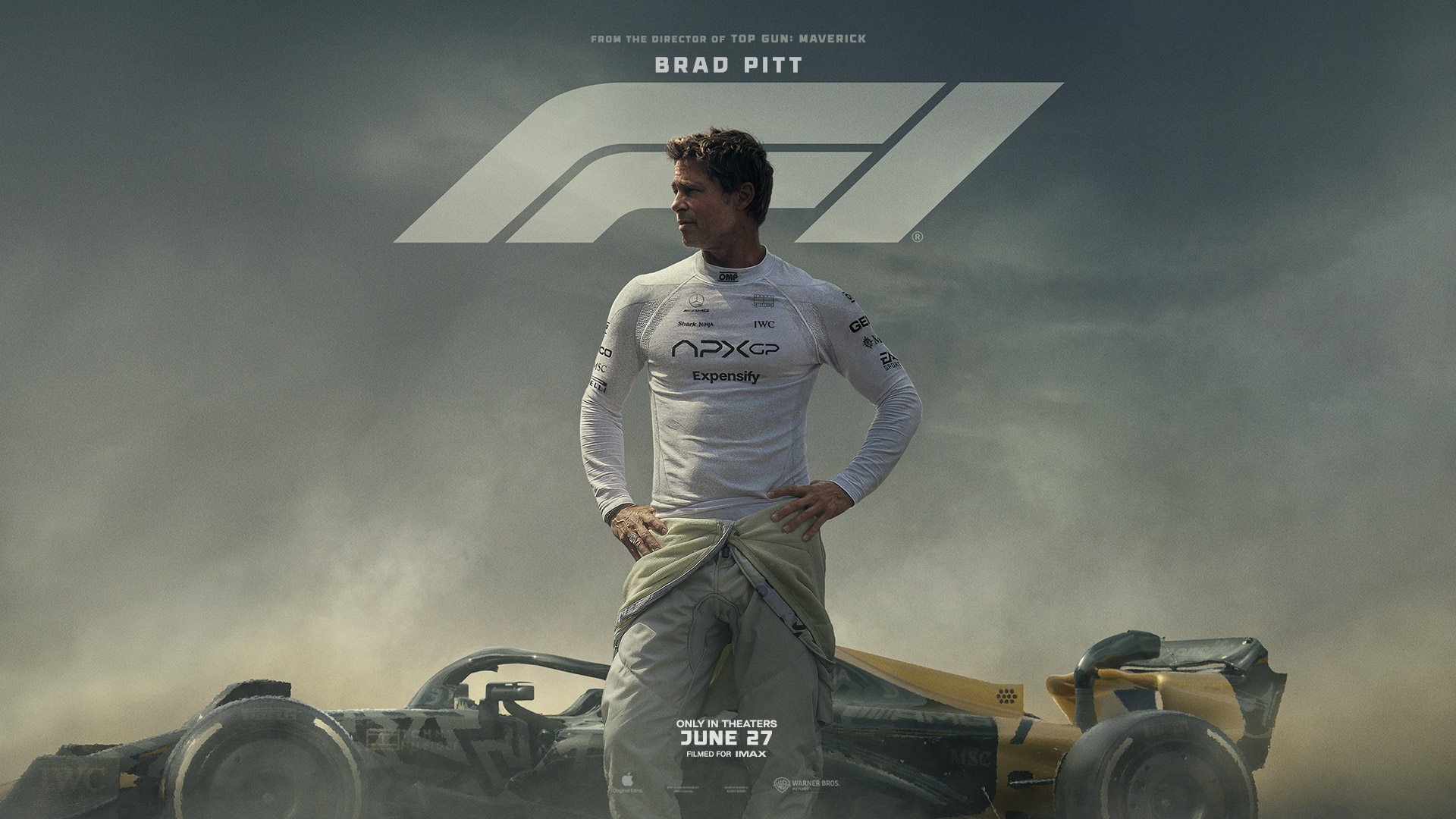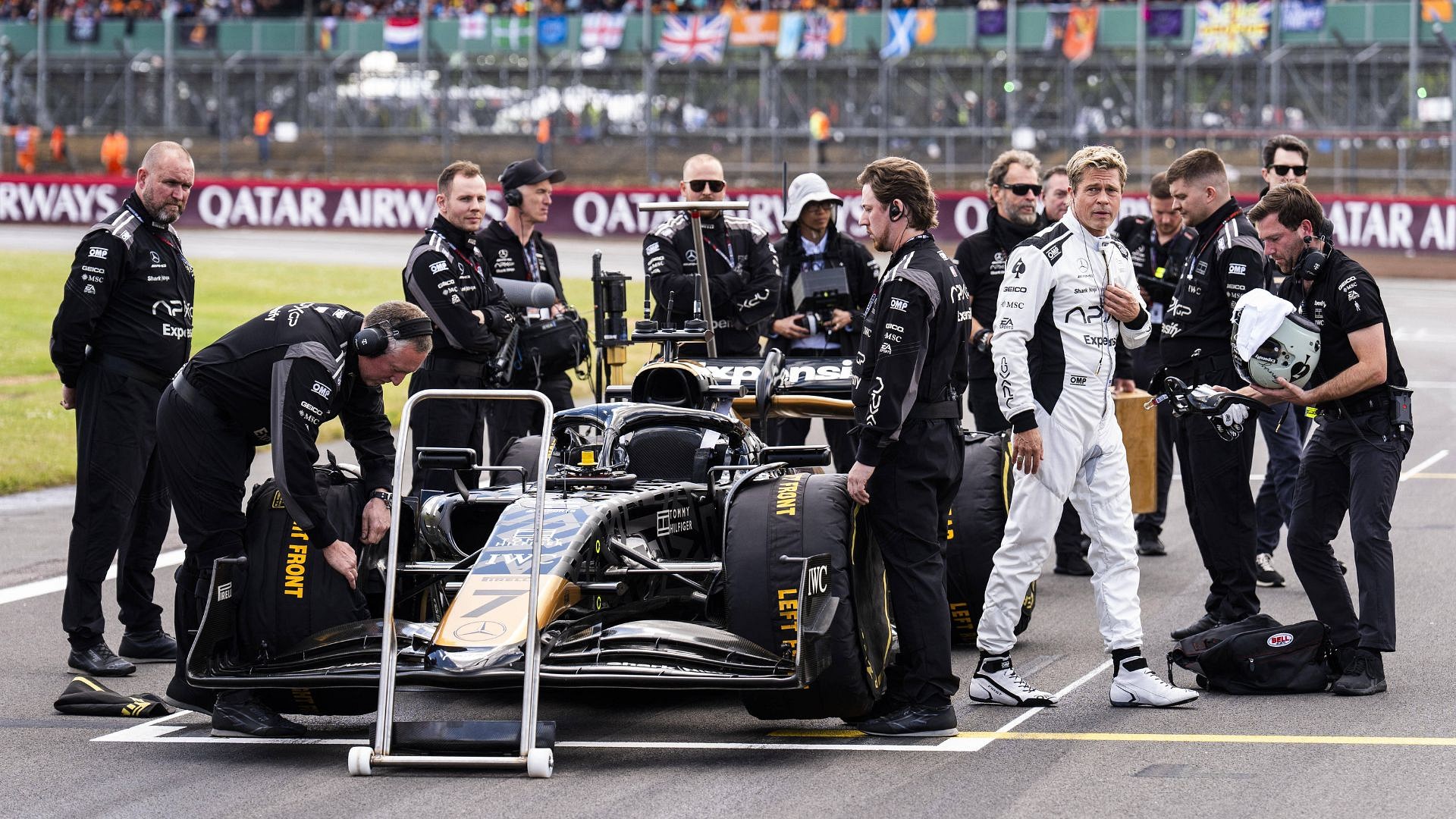I have mentioned previously that summer 2025 is set to be an exceptionally busy period for blockbuster releases. This is indeed the case, as the lineup promises to be remarkable. Within a short timeframe, we will witness the release of F1 directed by Joseph Kosinski and starring Brad Pitt driving real Formula 1 cars, Jurassic World Rebirth helmed by Gareth Edwards (the director behind Godzilla in 2014, Rogue One, and The Creator), Superman from James Gunn, and The Fantastic Four. Notably, the season will commence with F1, which I had the opportunity to preview at a press screening at Pathé La Villette’s IMAX theater. In one word, my viewing experience can be described as stunning.
Before diving into the main topic, it seems necessary to provide a brief technical note: Are you aware of the difference between “Filmed for IMAX” and “Shot with IMAX,” terms frequently seen on posters or trailers? This distinction is important. “Filmed for IMAX” refers to works optimized for the format, designed to take advantage of its immersive capabilities using digital cameras. In contrast, “Shot with IMAX” means the film was captured using IMAX 70mm cameras, which are heavy and complex but offer unparalleled image quality. Only a few filmmakers like Christopher Nolan have dared to undertake such technical challenges, and his upcoming film, The Odyssey, will be the first entirely shot with these IMAX cameras. Regarding F1, it is worth noting that although no IMAX camera was used, the film was fully conceived to enhance this format. And the result is, to put it mildly, impressive.
SIM-MERSION
Immersion is indeed the central theme of Joseph Kosinski’s latest creation, following his success with the blockbuster Top Gun: Maverick (2022), which grossed $1.5 billion at the box office. In F1, Kosinski shifts from fighter jets to roaring Formula 1 cars traveling at 300 km/h in a $200 million production featuring an incandescent Brad Pitt. At age 61, the actor maintains an extraordinary presence whether contemplating in his van, strolling casually in jogging attire, or devouring the track at full speed, exuding a timeless charisma that borders on audacious. He portrays Sonny Hayes, a legendary driver returning to racing after years of absence, a romantic figure haunted by a painful past, tasked with saving the fictional APX GP team. The narrative follows a fairly standard and perhaps overused structure: the seasoned veteran seeking redemption, the young prodigy in need of guidance, the eccentric mentor providing wisdom. While there is nothing particularly novel about this storyline, Kosinski executes it with remarkable efficiency. He excels at crafting grand spectacle, which is evident throughout F1. From its opening scenes, the film establishes an intensity rarely seen in a car racing movie. Even those typically resistant to Formula 1 will find something to appreciate, as the sensory immersion is complete: camera work from multiple angles, gyroscopic shots, and the thunderous roar of engines enhanced by a stunning Dolby Atmos mix… one truly feels they are experiencing the race firsthand. For its runtime of 2 hours and 35 minutes, F1 maintains this level of engagement without faltering.
BRAD: THE MALE
And how does Brad Pitt fare in all this? He excels, of course. The film is a true celebration of his presence: each scene highlights him, every shot appears crafted to emphasize his silhouette, his gaze, and his gestures. There’s an undeniable Dior Sauvage advertisement quality to it, sometimes taken to the extreme, but it succeeds thanks to his clear dedication. Like Tom Cruise, he aims to reinvent himself here, reminding everyone that he remains active in the industry. Marketing has heavily emphasized that the actor personally pilots the cars – although concrete evidence of this is scarce, there’s no doubt he at least participated in the safest scenes. He differs from Tom Cruise, but this isn’t meant as criticism. The key point is that the illusion is remarkably successful.
In “F1,” director Joseph Kosinski demonstrates his signature precise framing technique, which he first showcased in “Tron Legacy” and later in “Oblivion.” The intricate staging of the film is further enhanced by miniature cameras attached to the cars, capturing every turn, every overtake, and every head-to-tail maneuver. These same cameras were used in “Top Gun Maverick” to film actors inside cockpits; however, this time they are smaller yet offer better quality. Kosinski collaborated closely with Sony to develop these specialized cameras, and their impact is evident on screen. The racing scenes are intense and rarely seen in cinema, with a nervously precise filmmaking approach. Visually, “F1” is stunning, and if you have the opportunity to watch it in IMAX, it offers an unparalleled experience.
Drunk Driving Speed
If F1 succeeds technically and visually, the film is likely to frustrate Formula 1 experts due to its series of implausible situations. Even as a novice, I recognized that Sonny Hayes’ team strategies for gaining positions were unrealistic, involving excessive self-sabotage to trigger safety car interventions and an overreliance on hard or soft tires. Additionally, the scene where Sonny Hayes, who has not raced in Formula 1 for two decades, suddenly appears, masters a car in one practice lap, diagnoses technical issues, and has the entire setup redone is almost absurd. This is reminiscent of the famous “It’s magic, shut up!” moment.
Meanwhile, if Formula 1 experts express dissatisfaction, they will likely appreciate the references to the Formula 1 world with the inclusion of drivers such as Frédéric Vasseur, Zak Brown, Toto Wolff, and Lewis Hamilton, who also co-produces the film. Personally, I would have expected Hamilton to appear more prominently, but ultimately, his presence is limited to a few brief moments. So yes, Formula 1 is an exhilarating form of entertainment that captivates your senses visually and auditorily. It’s popcorn cinema, unashamedly designed to appeal to a broad audience at the expense of subtlety. Joseph Kosinski films Formula 1 as a gladiatorial sport, and his film is a two-hour-and-thirty-five-minute ride tailored to please everyone, which is perfectly acceptable. Novices will enjoy it as an action-packed movie, while hardcore Formula 1 fans may find fault with the liberties taken in the narrative. Hans Zimmer’s score amplifies the roar of the engines, Brad Pitt delivers a fiery performance, and viewers leave feeling fully satisfied.
**8/10**: F1 is likely to provoke raised eyebrows among Formula 1 experts due to its exaggerated sequences and narrative clichés; however, it succeeds in delivering a highly immersive and spectacular experience tailored for the big screen, especially in IMAX. While some may critique plot shortcuts or deviations from sporting reality, it is challenging not to appreciate a film that offers such generous entertainment value, technical mastery, and charismatic performances by Brad Pitt. Director Joseph Kosinski crafts an expansive piece of mainstream entertainment with a distinct visual style, reminiscent of his work on “Top Gun: Maverick.” In summary, F1 can be seen as the Formula 1 version of Top Gun: Maverick. For these reasons alone, it is worth seeing in theaters.
Before we speed off into the world of Formula 1 with “F1,” be sure to check out a thrilling addition to the gaming world. Sophie Laurent’s recent post, published on September 14th, delves into Capcom’s exciting announcement about Ada Wong getting her own adventure in the Resident Evil 4 Remake via paid DLC titled “Separate Ways.” This exclusive content offers an overhauled visual design and updated gameplay mechanics for Ada, including a grappling gun that adds new layers of mobility and combat. Don’t miss out on this gripping narrative twist from Ada’s perspective as she searches for “The Amber” under Wesker’s orders. Dive into the details Resident Evil 4 Remake: Ada Wong to Get Her Own Adventure via Paid DLC, Here’s a Trailer and explore how Capcom is expanding the universe of one of gaming’s most iconic characters.
Have any thoughts?
Share your reaction or leave a quick response — we’d love to hear what you think!



